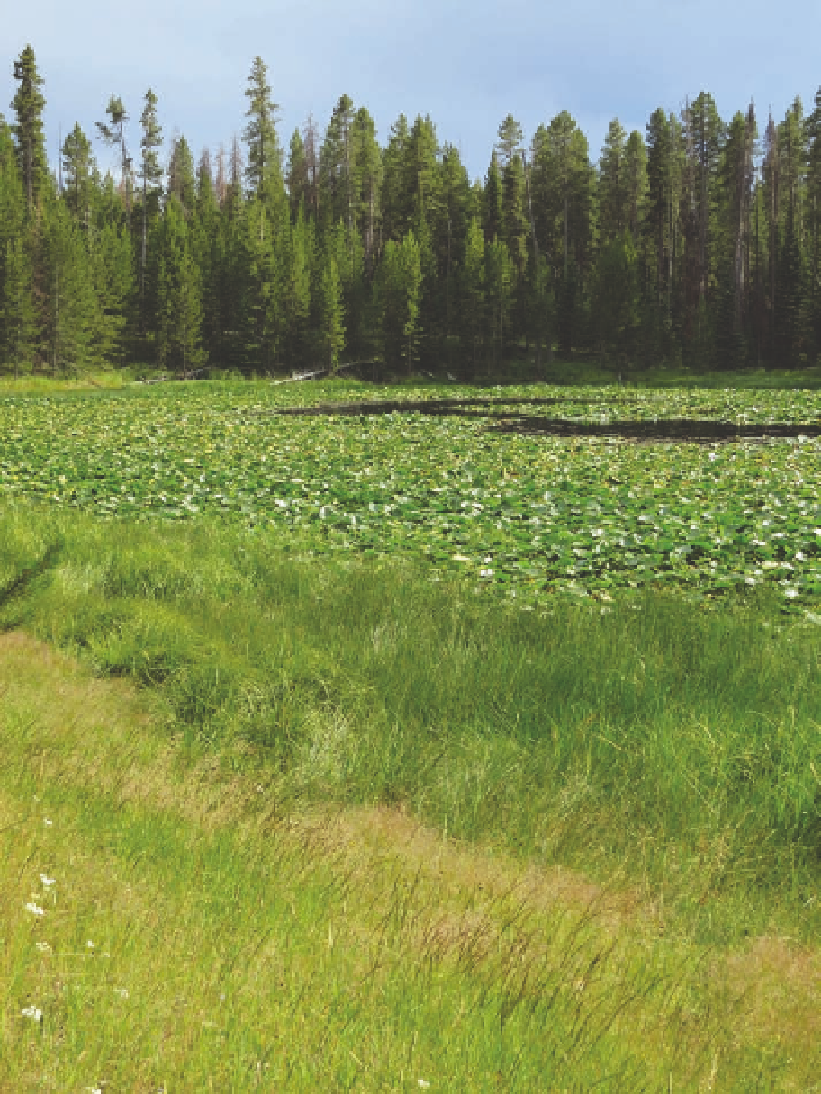Geoscience Reference
In-Depth Information
Fig. 5.5. Pothole marsh on
the slope of Signal Mountain
in Grand teton national
Park. note the abundance
of pond lily with floating
leaves. Growing next to the
marsh is bluejoint reedgrass,
rough bentgrass (reddish), and
northwest territory sedge.
elevation 7,000 feet.
At low elevations, common marsh plants include
nebraska sedge, cattail, common spikerush, threesquare
bulrush, and hardstem bulrush. Forbs often are com-
mon and may include arumleaf arrowhead and water
knotweed. Marshes in the lowlands are found in aban-
doned stream channels and backwater channels, but
they are especially common in irrigated areas, more
specifically, in the slowly moving waters of ditches and
in depressions that receive water from canals and irri-
gated fields. Small marshes sometimes occur in surpris-
ing places, such as in swales between sand dunes, where
water percolating through the porous dune encounters
relatively impervious sediments (see chapter 9).
in many marshes and playa wetlands, the vegetation
forms concentric zones, each dominated by a differ-
ent group of plants (figs. 5.6 and 5.7; see also fig. 5.5).
Plants that need or can tolerate longer dry periods and
shallower water grow adjacent to the upland, whereas

Search WWH ::

Custom Search